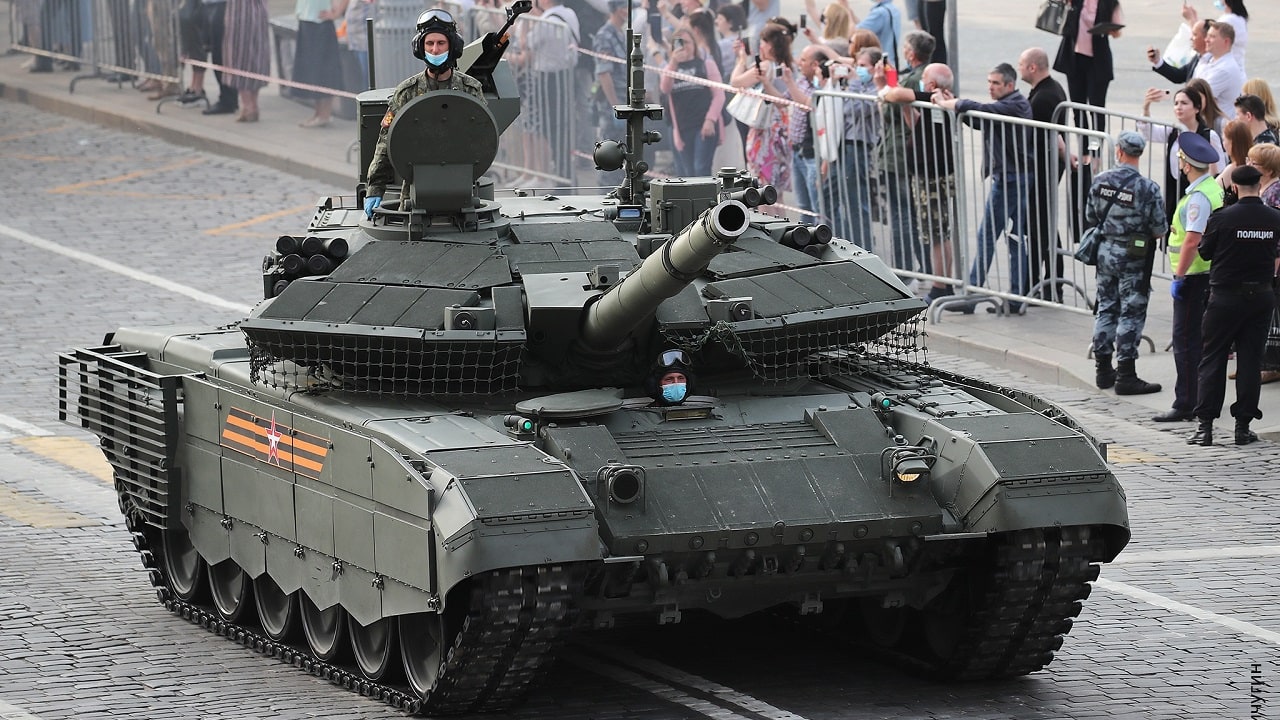On August 29, Ukrainian President Volodymyr Zelensky, after months of preparation, launched an offensive to retake the Kherson region from occupying Russian troops. As many had warned in the weeks preceding the attack, there was no viable military path to victory for the Ukrainian offensive. The Ukraine military launched its attack anyway. Early independent assessments indicate the attack has indeed failed, and at a high cost in troops lost.
(Watch 19FortyFive Contributing Editor Daniel L. Davis on the BBC discussing the war in Ukraine.)
While its reasonable to ask why the Ukraine military would launch an attack that evidence strongly suggested they could not win, we have some of our own dark military history to provide a partial explanation. In a remarkably similar situation to World War II, the United States Army launched an offensive action in 1944 against the Germans defending along a river line in central Italy. It was called the Rapido River. It would turn out to be one of the worst military defeats for the United States in the war.
It proved to be an attack that was unnecessary and completely avoidable. Nearly an entire division was pointlessly sacrificed.
American Army at the Battle of Rapido, 1944
In late 1943, the Allies had decided to flank the German defenses in Italy by conducting a surprise beach landing south of Rome at the resort city of Anzio. To prevent the Germans from moving troops from their main line of defenses in central Italy to send reinforcements to Anzio, Allied commander Gen. Herold Alexander had given U.S. V Corps Commander, Gen. Mark Clark, an order to attack the German’s main line of defense at the Gustov line to hold the enemy in place. Anchoring the German defenses on the Gustov line was the Rapido River.
To execute his commander’s mission, Clark ordered his 36th Infantry Division, known as the “Texas Division,” to attack the Germans by conducting a combat crossing of the Rapido. The 36th Infantry’s commander, Maj. Gen. Fred L. Walker, knew the mission was suicide. The Germans had spent months preparing defensive positions with interlocking fires, covered with pre-positioned artillery and mortar targets, and they held the high ground. To even get to the river, Walker’s men would have to march over open ground, exposed to German artillery. With no protection from enemy fire, Walker knew, his men would be wiped out before making any viable crossing of the river.
Knowing the tactical situation on both sides of the river, Walker had identified an alternative location from which to attack that would have afforded some protection from German observation and artillery fire, and was shallow enough to cross without the need for boats. Five times Walker asked Clark to alter the mission, and five times the commander refused. Clark stubbornly demanded the men of the 36th Division attack at the main point of the river into the teeth of enemy strength.
In Congressional testimony after the war, Walker said of his mission prior to executing the order that it “was very obvious to even an inexperienced soldier that an attack such as the one ordered had practically no chance for success. All the teaching of sound military tactics would be violated by such an attack.” As it turned out, Walker was proven right, at the cost of over 1,700 men killed, wounded, or captured in barely 48 hours of fighting.
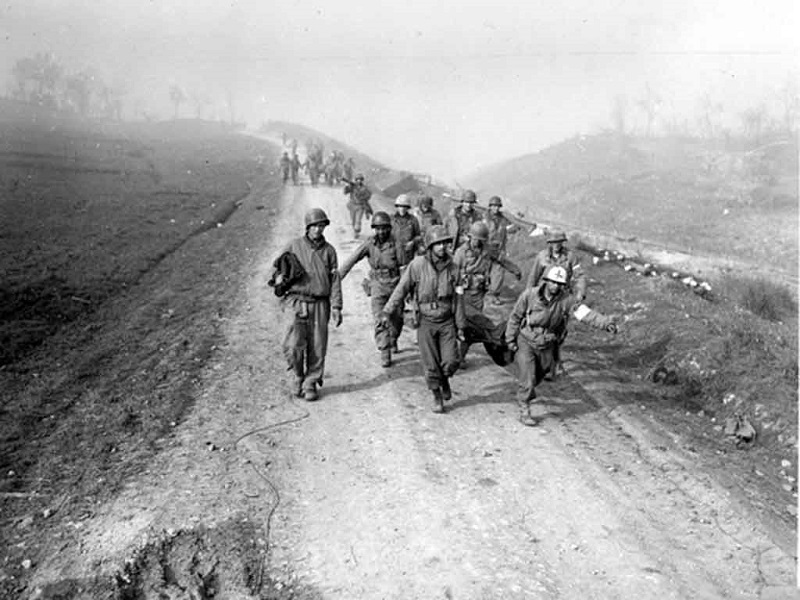
Litter bearers bring back wounded during attempt to span the Rapido River near Cassino, Italy.” 23 January 1944
Everything Walker feared came to pass. On January 20, 1944 Walker’s men began the assault, at night, to try and evade detection from German gunners. He didn’t succeed. The enemy unleashed countless barrages of artillery that cut the U.S. troops to pieces. The first night no American breached the river. Undeterred, Clark remained unmoved and told Walker the order to attack the next night was still valid. On the 21st, the 36th attacked again, suffering withering artillery and mortar fire. Some men made it across the river this time, but only a handful, and the second echelon of Germany’s layered defenses quickly eliminated them.
In the end, the attack wasted an entire American infantry division, as the 36th was rendered combat ineffective and had to retire from the field. Eventually the Allies moved on to other parts of the front and – ironically – successfully crossed in the location Walker had originally identified near a fordable portion of the Rapido. What this battle exposed, was what happens when military leaders are so focused on the outcome desired that they ignore sound military judgment that indicate a given course of action has a high likelihood of failure.
Not unlike what appears to be unfolding with the Ukrainian attack at Kherson.
Ukrainian Offensive at Kherson, 2022
Last May, I explained that for Ukraine to have any chance of defeating Russia, it would have to do three things: blunt Russia’s Donbas assault, create mobile defenses in depth to the west of Donbas, and create a new 100,000-man offensive force. In the months since, it has been proven that Ukraine has been entirely unable to do two of the three requirements – blunt Russia’s attack in Donbas and create a 100,000 man offensive force – and only partially successful at one – prepare more lines of defense west of Donbas.
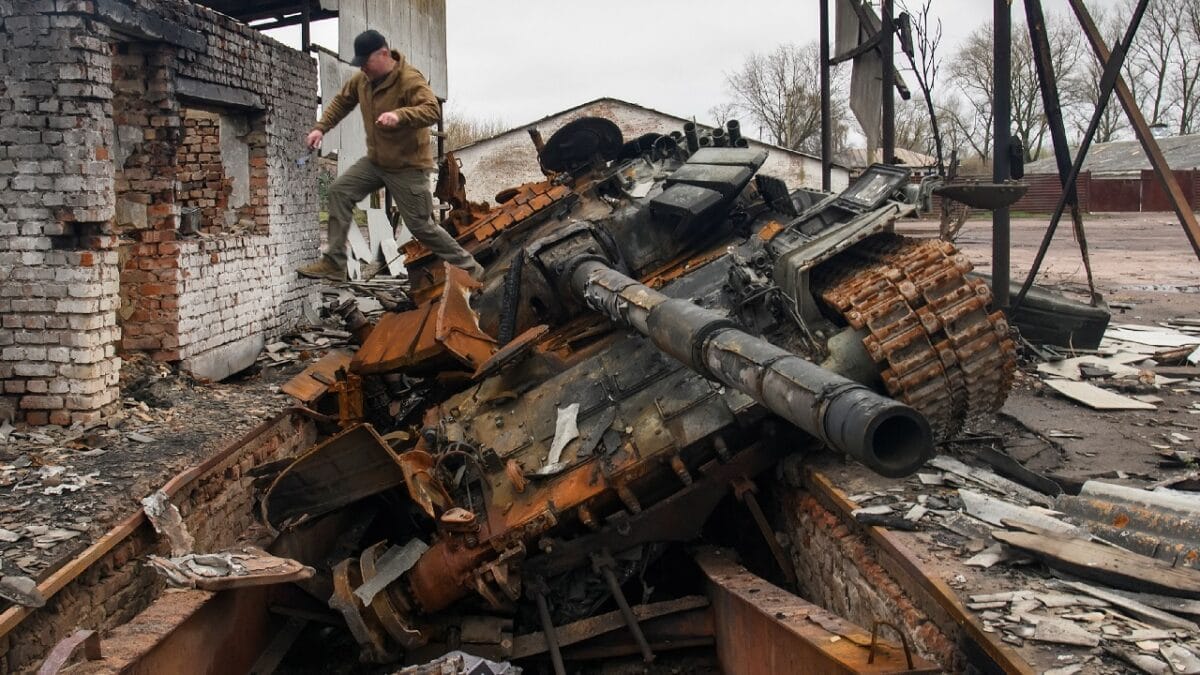
A man jumps from a Russian T-72 tank destroyed during Russia’s invasion, in the village of Yahidne, Ukraine April 20, 2022. REUTERS/Vladyslav Musiienko
In June, as it was becoming evident that Ukraine would be unable to stop Russia in the Donbas and couldn’t muster either the personnel or equipment to form a major offensive force. At the time I wrote, “Zelensky and the Ukrainian people will soon come face-to-face with the ugly prospect that continuing to fight will only bring more death and destruction to its people, cities, and armed forces.” The military fundamentals, I explained, were in Russia’s favor.
In July, just after the fall of Severodonetsk and Lysychansk, I pointed out it was becoming ever more evident that the fundamentals were increasingly against Ukraine. “The Ukrainian Armed Forces will continue to suffer loss after loss, surrendering more territory to the Russians,” I argued. If Kyiv and the West were to continue ignoring combat reality, I continued, “Ukraine may suffer an outright military defeat.” As the weeks and months passed, Kyiv was open and blunt about preparing for an offensive in the Kherson region to try and recapture lost territory there.
Should Zelensky order such an assault, I wrote in an early August assessment:
Every important historic battlefield determinant indicates Ukraine would fail if it tried to launch an offensive against Russia in Kherson… Russian gunners and drone operators will be watching and able to engage armored vehicles and infantrymen in the open, with only limited protection. Russia still has considerable amount of artillery in the Kherson region, ability to launch rocket attacks, and still a major advantage in air power. Ukraine would run the risk of being cut to ribbons if they ventured into the open.
The Kherson offensive began on August 29, according to Ukrainian government sources. In the six days following, Kyiv was unusually mum on providing any details of the battle, citing “operational security,” as the reason for its opacity. On Sunday September 3, however, Zelensky claimed Ukrainian troops had made significant progress, though he too refused to offer details of how or where his troops had succeeded. Russian media, however, was far from silent.
Through the fist week of battle, Russian media reported that Ukraine troops had suffered a series of significant losses – up to 3,000 killed in action. They claimed that Ukraine had indeed launched an offensive from three axes west of Kherson and penetrated some Russian lines, but then claimed the Ukrainians were destroyed in local Russian counterattacks and eventually driven back to their start points.
Russian media and government reports, however, are notorious for lying or greatly exaggerating, so nothing they say can be taken at face value. On Wednesday, however, the Washington Post offered one of the first independent looks at what actually took place after the first week when it conducted on-location interviews in hospitals with Ukrainian troops wounded in the Kherson offensive. It wasn’t pretty – or surprising.
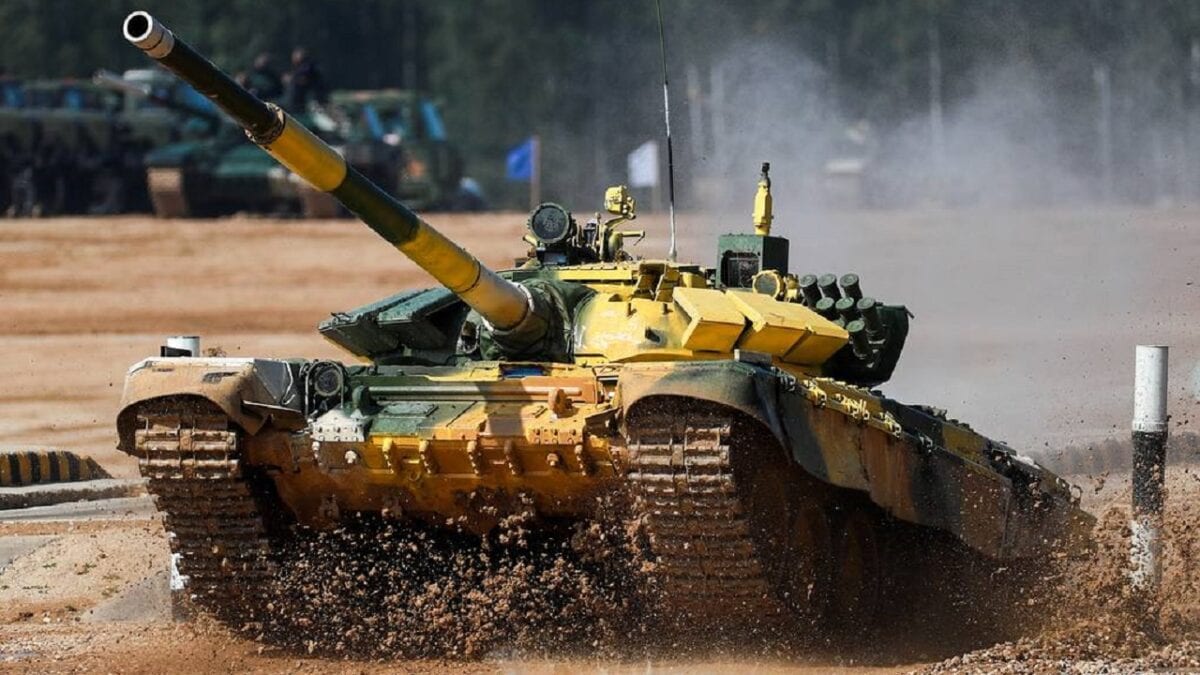
Russian T-72 tank. Image Credit: Creative Commons.
Ukrainian soldiers, the Post reported, “said they lacked the artillery needed to dislodge Russia’s entrenched forces and described a yawning technology gap with their better-equipped adversaries.” Russian tanks emerged from newly build cement fortifications to blast infantry with large-caliber artillery, one soldier to the Post. Anther wounded trooper said “(w)e lost five people for every one they did,” while another added, “(i)f we fire three mortars, they fire 20 in return.”
As with America’s loss at the Rapido River, the military fundamentals clearly indicated an attack against a well-entrenched opponent – one that had months to prepare – would have no genuine chance of success. Russia’s known superiority in artillery, mortar, and air power would make virtually any attack, across open land, near-suicidal. The Americans in the 36th Infantry Division and the Ukrainian soldiers in the Kherson front likely knew their task was impossible, yet made the attempt anyway – and suffered the expected results.
Differences between 1944 and 2022
There are, however, critical differences between the Rapido disaster and the one apparently unfolding in Kherson today. In early 1944, the U.S. was part of a major alliance consisting of millions of troops. Germany was already reeling in the east to a Soviet onslaught barreling towards Berlin and on June 6, 1944, suffered the Normandy invasion that opened up a third major attack against its troops.
In Germany’s case, they had no help and eventually had to withdraw from the Rapido River, despite having defeated the U.S. in that battle. The U.S., even though it had lost the 36th Infantry Division as a combat-capable force, still had hundreds of thousands of other U.S. and allied troops to continue the offensive elsewhere in Italy.
Today, Russia has no such pressures on other fronts, and the Ukrainian side has only limited numbers of remaining troops – and even those few troops are equipped with insufficient amounts of inadequate armor. Western defense ministers are meeting at Ramstein Air Base in Germany on Thursday to discuss the possibility of providing a new tranche of weapons to Ukraine.
If the group doesn’t promise near-immediate delivery of 750 to 1,000 units of modern tanks, armored personnel carriers, self-propelled howitzers, and all the ammunition and support necessary to launch and sustain offensive operations, it is likely Russian advantages in firepower and armor will continue to press the frontlines to the east. Even were the Western defense ministers to provide such a massive tranche, likely the best Ukraine troops could hope for would be to prevent any further Russian advances in Kherson, Kharkiv, and the Donbas. The most likely outcome, however, will be that the West provides a fraction of that total.

Russian Su-25s. Image Credit: Creative Commons.
It’s time the West woke up from its happy talk of hopes Ukraine is soon going to succeed despite age-old combat fundamentals being on the side of their Russian enemy. Clearly, the hope among many in the West is that the war will deteriorate into a long-term stalemate that will perpetually bleed Russian strength. There are two problems with that aspiration.
First, any weakening of Russia is going to be a temporary condition that, in almost every conceivable case, will eventually regain its strength. Ukraine, on the other hand, will pay for this temporary diminution of Russian power with the permanent loss of tens of thousands of its citizens, the destruction of scores of its cities (many of which may never be rebuilt), the scattering of millions of its residents abroad. Second, its not at all clear Ukraine can hold out against the expected Russian fall and winter offensives without breaking.
Conclusion
As of this writing, there is still much uncertainty as to what, exactly, happened with Ukraine’s offensive against Russia in Kherson. It is possible future reporting could reveal that Ukraine’s losses weren’t as bad as it appeared or that Russian losses were worse than has been reported. Yet regardless of what subsequent reporting uncovers, the combat fundamentals that augured against a Ukrainian offensive remain:
Zelensky’s forces don’t have remotely enough modern ground combat equipment to defeat Russia, remain deficient in artillery, have insufficient air defense capacity, have virtually no air power remaining, and most of all don’t have the trained and experienced personnel to conduct the sophisticated combined arms operations necessary to defeat entrenched opponents (even if they do eventually get the many hundreds of modern armored tanks and artillery).
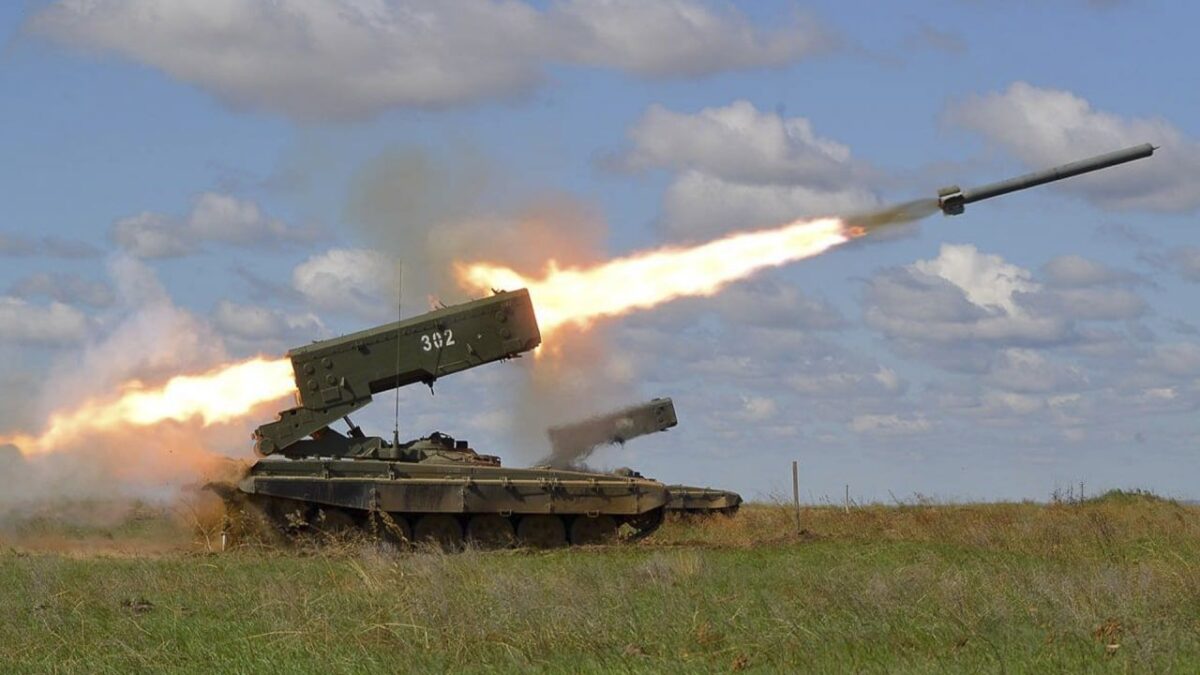
TOS-1A fighting in Ukraine. Image Credit: Creative Commons.
It is always possible that Russia could run out of steam, that their forces might not be able to capture substantially more Ukrainian land, and that a stalemate could eventually settle in. If a stalemate does eventually develop, it would result in a grievous, long-term bleed of Ukrainian people and virtually destroy Kyiv’s national economy. Yet it also remains possible that Russia’s military advantages could eventually result in Ukraine’s defensive collapse and Kyiv could lose the war. It’s too early to say conclusively how this all ends.
What isn’t going to happen, at least not before the passage of some significant number of years, is a Ukrainian offensive that drives Russia out of all occupied Ukrainian territory and allows Kyiv to win the war. At the very least, its time the West came to grips with what is possible – and what isn’t.
Now a 1945 Contributing Editor, Daniel L. Davis is a Senior Fellow for Defense Priorities and a former Lt. Col. in the U.S. Army who deployed into combat zones four times. He is the author of “The Eleventh Hour in 2020 America.” Follow him @DanielLDavis.

